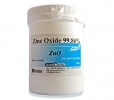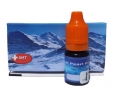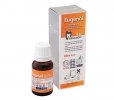Glass ionomer dental materials have been around for almost 50 years. They’re perennial favorites for pediatric restorative dentistry, but these versatile materials have many uses in the dental office.
3 ways glass ionomers are changing restorative dentistry
The early uses of glass ionomers were for anterior restorations and as cement for crowns and bridges. Over time, however, dental professionals expanded their use of the material based on its strength, solubility and translucency.
Today, glass ionomer and RMGI restorative materials are also used for occlusal restoration in primary teeth, treating proximal lesions, affixing orthodontic brackets, and lining or using as a base for caries restorations.
1. It’s one restorative material with many treatment uses
One of the ways that glass ionomers and RMGIs are changing restorative dentistry is in how many ways you can use them. This gives clinicians many options.
here are many types of glass ionomers. The different formulations allow for various treatment applications. For example, low-viscosity glass ionomer cement can be used as a sealant. Because of its unique properties, including its adhesion and hydrophilic features, it can be a preferable alternative to resin sealants for certain patients.
High-viscosity glass ionomer cements can be used instead of resin composite in many situations as a filling material. They cure by an acid-base chemistry that doesn’t require light polymerization. Dr. Lawson describes glass ionomers as some of the original bulk fill materials. Dr. Chung says he also appreciates how these restorative materials simplify some restorations.

2. They decrease postoperative sensitivity that can occur with composite resins
Glass ionomers do not experience polymerization shrinkage that occurs with resin composites. As far as isolation and having incremental curing as you would with composites, Dr. Chung likes that glass ionomers and RMGIs have no polymerization shrinkage.
Polymerization shrinkage can result in exposing the internal structures of the tooth. Exposed dentin is a cause of post-operative sensitivity, including dentinal hypersensitivity. Dentinal hypersensitivity is caused by the stimulation of exposed dentin. Exposed dentin has many causes, but one is preparations for cavity treatment.

3. You don’t have to be as diligent about isolation as with composite resins
Composites need complete isolation from moisture for placement. However, achieving complete isolation is widely considered a difficult aspect of adhesive dentistry. In dental school, students learn to isolate with a rubber dam, but once in practice, dentists often abandon the rubber dam to save time.
Glass ionomers are hydrophilic. that because glass ionomers and RMGIs are more moisture tolerant, they can maintain their bond to tooth structure even if some saliva contamination occurs.




